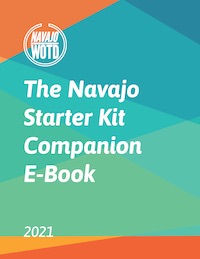naat'áanii
leader
nah tah knee
I wanted to take today to shed some more light on the Navajo word for “leader” as it is commonly known.
As a matter of semantic, the Navajo particle -igii (as in Diné Bizaad yee Nidaazbaa’ígíí) is referred to as a nominalizer. I creates an object, more or less, out of an action or process. That particle modifies the root word nit’áh, which signifies the very growth processes that lead to maturity.
The earlier post outlined a framework of qualities in Navajo leadership, but if you were to extrapolate that framework out to deeper levels of society, you’d eventually arrive at the individual (as is intended). At this point, these qualities are practiced as people direct themselves about the way they live their life. In general, the Navajo moral blueprint is that of hózhǫ́, or the balanced and beautiful way.
So in the literal sense, naat’áanii is something that guides growth, or directs it, by means of a process (following a number of rules or conditions). Historically, there was no unified nation of Navajo people, and therefore no universally sanctioned chief like the word naat’áanii has come to imply. The contemporary view of naat’áanii really began in the days of Hwéeldi (the Navajo Long Walk), when American governments demanded that they deal only with “chiefs”, as it was assumed that they could legitimately enter into a treaty on behalf of all Navajo people.
A firm contemporary model of Navajo leadership through governance has yet to emerge even after decades of cycling through from band and clan leadership, to the early councils of medicine men, then onto the Navajo Business Council in the 1920s, and then the subsequent iterations of the Tribal Council that have led up to today’s Navajo Nation Council (complete with balances a checks in the Presidency and Judiciary branches).
Original post date: .
